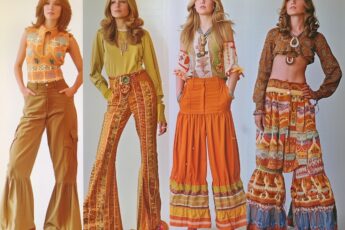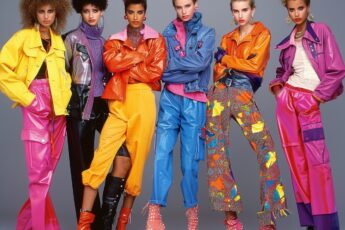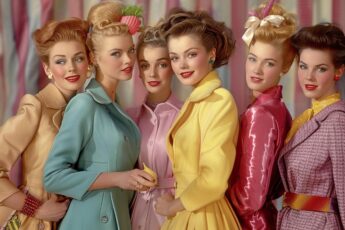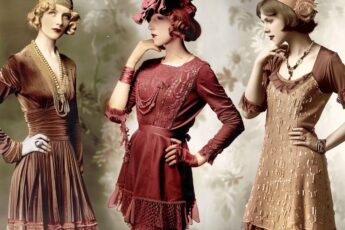2000s Fashion – A Decade of Eclectic Styles
The 2000s were a wild ride for fashion. I watched trends explode and fizzle at breakneck speed. This decade saw the birth of social media, reality TV, and fast fashion – all of which turned the industry on its head.
Y2K aesthetics kicked off the millennium with a bang. Futuristic metallics mixed with retro vibes create a unique look we’d never seen before. Hip-hop culture took center stage, influencing everything from streetwear to high fashion.
But it wasn’t all baggy jeans and bling. The emo and pop-punk scenes brought skinny jeans and band tees into the mainstream. Bohemian chic made a comeback, while velour tracksuits somehow became a status symbol.
Fashion is cyclical, but the 2000s spun that cycle into a dizzying whirlwind.
Technology played a huge role, too. New fabrics emerged, changing how we thought about comfort and performance in clothing. The internet began to democratize fashion, giving rise to fast-fashion giants and global trend-sharing.
Here’s a quick snapshot of the decade’s defining elements:
- Low-rise jeans
- Ugg boots
- Juicy Couture tracksuits
- Von Dutch trucker hats
- Oversized sunglasses
- Logomania
The 2000s were a time of experimentation and excess. Some trends we’d rather forget, while others laid the groundwork for today’s fashion landscape. In this article, I’ll dive deep into the styles, subcultures, and innovations that defined this unforgettable era in fashion history.
Y2K Aesthetic: Futuristic Meets Retro
The turn of the millennium brought a unique blend of futuristic optimism and nostalgic throwbacks. Y2K fashion embodied this paradox perfectly. I saw designers and street style mavens alike embrace a bold, often outrageous aesthetic that defined the early 2000s.
Metallic fabrics reigned supreme. Silver, gold, and iridescent materials appeared everywhere—from club wear to casual daytime looks. These shiny textiles gave outfits an instant space-age feel.
Cyberpunk influences crept into mainstream fashion, bringing:
- Chunky platform shoes
- Holographic accessories
- Sleek, minimalist silhouettes
But it wasn’t all about looking to the future. The Y2K aesthetic also pulled inspiration from the ’60s and ’70s, creating a retro-futuristic mashup. Think mod miniskirts paired with metallic crop tops or disco-inspired jumpsuits in high-tech fabrics.
The future is a remix of the past, filtered through a shiny new lens.
Accessories played a huge role in completing the Y2K look. Tinted sunglasses, often in unusual shapes like tiny rectangles or oversized shields, were must-haves. Chunky plastic jewelry and metallic temporary tattoos added extra flair.
The Y2K aesthetic was loud, proud, and unapologetically artificial. It celebrated technology and the dawn of a new era in a way that feels both dated and oddly prescient today.
Hip-Hop’s Dominating Influence
As Y2K futurism faded, hip-hop culture stepped into the spotlight, reshaping fashion in profound ways. The baggy silhouette became king, influencing everything from jeans to suits.
Oversized clothing wasn’t just a style choice – it was a statement. I watched as loose-fitting jeans, XXL t-shirts, and roomy hoodies became the uniform of a generation. This look crossed gender lines, with women embracing baggy styles just as enthusiastically as men.
Key elements of hip-hop fashion included:
- Throwback jerseys
- Durags and bandanas
- Timberland boots
- Oversized puffy coats
The rise of bling culture brought a new level of opulence to street style. Chunky gold chains, diamond-encrusted watches, and grillz became status symbols. This emphasis on conspicuous wealth trickled up to high fashion, influencing the aesthetics of luxury brands.
Streetwear brands exploded in popularity during this time. Labels like BAPE, Rocawear, and Sean John became household names. These brands bridged the gap between hip-hop culture and mainstream fashion, often collaborating with established designers.
True style isn’t about the label – it’s about how you wear it.
Colors were bold and bright, with monochromatic looks gaining traction. Matching your outfit from head to toe in a single hue became a power move.
Hip-hop’s influence extended beyond clothing. Rap artists’ music videos, album covers, and red-carpet appearances became major sources of fashion inspiration for fans worldwide.
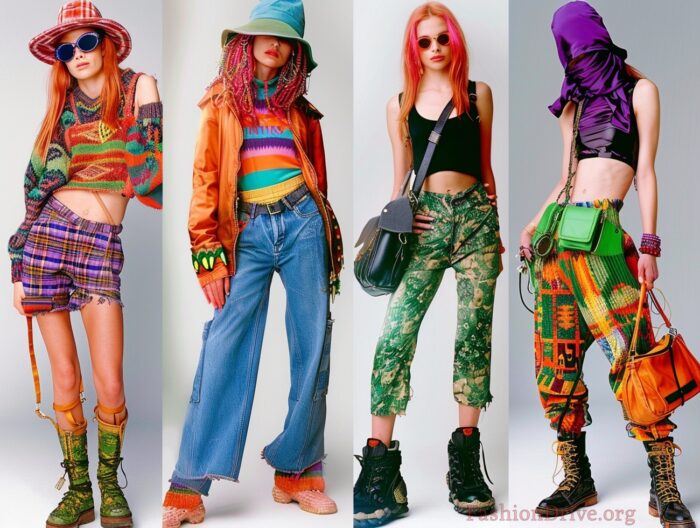
Pop Punk and Emo Subcultures
As hip-hop dominated mainstream fashion, alternative scenes carved out their own distinct styles. Pop punk and emo subcultures exploded in popularity during the mid-2000s, bringing a rebellious edge to youth fashion.
Skinny jeans became the cornerstone of this look. After years of baggy styles, tight denim felt fresh and daring. I saw teens and young adults squeeze into jeans so snug they looked painted on. Often, these came in dark washes or bold colors like red and purple.
Band t-shirts served as badges of honor. Wearing your favorite group’s merch wasn’t merely about fashion – it was a statement of identity. Popular bands included:
- Green Day
- My Chemical Romance
- Fall Out Boy
- Paramore
Accessories played a crucial role in completing the emo and pop-punk aesthetic:
| Accessory | Description |
|---|---|
| Studded belts | Wide, often with multiple rows of metal studs |
| Checkered Vans | The go-to footwear for skaters and punk fans alike |
| Wristbands | Rubber or fabric, often bearing band logos |
| Chunky black eyeliner | For all genders, applied heavily |
Your style is your loudest voice. Make it scream.
Hair became a major focal point. Side-swept bangs, often dyed black or vibrant colors, defined the emo look. Straightening irons flew off shelves as both girls and guys sought pin-straight locks.
This subculture’s influence extended beyond its core fan base. Elements of emo and pop-punk style seeped into mainstream fashion, softening and adapting along the way.
Bohemian Chic Revival
As a counterpoint to the edgy emo aesthetic, bohemian chic made a major comeback in the 2000s. This laid-back, romantic style drew inspiration from the 1960s and 70s but with a modern twist.
Peasant blouses emerged as a key piece. Loose-fitting and often embroidered, these tops are paired easily with jeans or flowy skirts. I watched as women embraced this comfortable yet feminine look for both casual and dressier occasions.
The boho revival championed natural fabrics and earthy tones. Popular elements included:
- Floral prints
- Crochet detailing
- Fringe accents
- Suede and leather
Layering became an art form. Long, flowy skirts over boots, multiple necklaces, and stacked bracelets all contributed to the bohemian vibe.
Accessories embraced a handcrafted look:
- Oversized hobo bags
- Beaded jewelry
- Coin belts
- Woven headbands
True style transcends trends. It’s about expressing your inner self.
Footwear ranged from strappy sandals to knee-high boots, often with a slouchy fit. Comfort reigned supreme, but never at the expense of style.
The boho chic trend found champions in celebrities and fashion icons. Music festivals like Coachella became hotbeds for bohemian fashion, influencing mainstream style well beyond their desert locales.
This revival of 60s and 70s aesthetics offered a softer, more romantic alternative to the harder-edged styles of the early 2000s. It celebrated individuality and a connection to nature, resonating with those seeking an escape from the increasingly digital world.
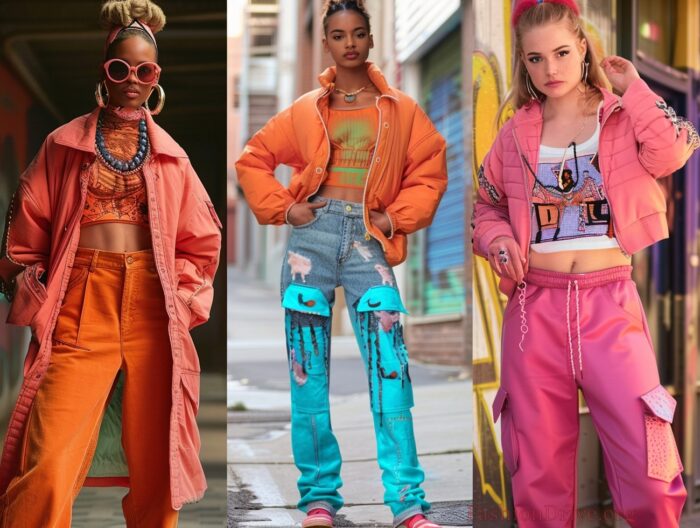
Juicy Couture and the Rise of Velour Tracksuits
The 2000s saw the unexpected rise of the velour tracksuit as a fashion staple, with Juicy Couture leading the charge. This trend embodied the decade’s obsession with casual luxury and comfort.
Juicy Couture’s colorful variations became a cultural phenomenon. I observed women of all ages embracing these matching sets, which typically consisted of:
- Zip-up hoodie
- Drawstring pants
- Often embellished with rhinestones or embroidery
The appeal lay in their versatility. Wearers could lounge at home, run errands, or even dress them up for a night out. This blurring of lines between casualwear and fashion reflected changing attitudes towards comfort and style.
Celebrity endorsements played a crucial role in the tracksuit’s popularity:
| Celebrity | Impact |
|---|---|
| Paris Hilton | Made tracksuits a paparazzi staple |
| Jennifer Lopez | Brought the look to music videos |
| Madonna | Elevated tracksuits to high fashion |
True luxury is feeling comfortable in your own skin – and clothes.
The tracksuit trend expanded beyond Juicy Couture. Other brands jumped on the bandwagon, offering velour sets at various price points. This democratization of the look made it accessible to a wider audience.
Colors ranged from pastel pinks and baby blues to bold purples and deep browns. The back pockets often featured branding, turning wearers into walking advertisements for their chosen label.
While some critics dismissed the trend as tacky, its influence on fashion was undeniable. The velour tracksuit paved the way for the athleisure movement we see today.
Denim’s Evolution
Denim underwent a dramatic transformation in the 2000s. The decade saw rapid shifts in cuts, washes, and embellishments that reflected broader fashion trends.
Low-rise jeans dominated the early to mid-2000s. Waistbands dipped dangerously low, often sitting well below the hips. I watched as this trend pushed boundaries, sometimes to impractical extremes.
Embellished designs took center stage:
- Rhinestone accents
- Embroidered pockets
- Distressed and ripped styles
- Colorful stitching
Washes evolved throughout the decade:
- Super light, almost white denim
- Dark, inky blues
- Acid wash revival
- Colored denim in pastels and bold hues
Jeans are a canvas. How you wear them is the art.
The silhouette of jeans changed dramatically from 2000 to 2009. We saw a gradual transition from bootcut to skinny jeans. This shift reflected a broader move towards slimmer, more fitted clothing in all areas of fashion.
Denim expanded beyond jeans. Jackets, skirts, and dresses all got the denim treatment. The Canadian tuxedo (denim on denim) even had a brief moment in the spotlight.
Premium denim brands like True Religion and 7 For All Mankind rose to prominence. These labels elevated jeans to luxury status, with price tags to match.
By the end of the decade, skinny jeans had firmly established themselves as the dominant style. This set the stage for the jegging craze that would follow in the 2010s.
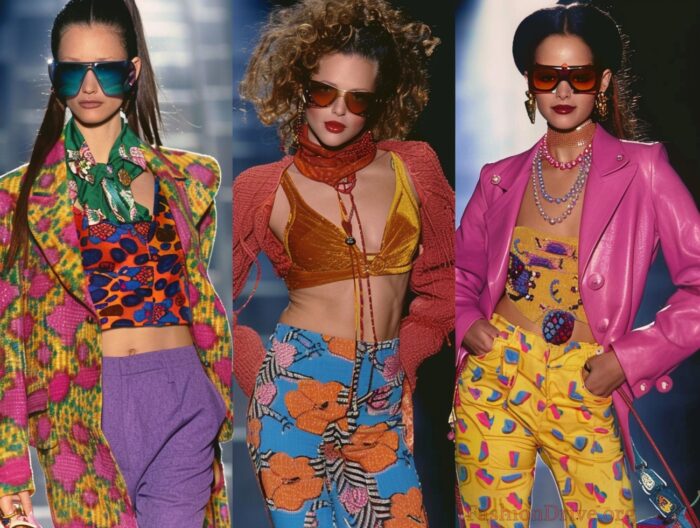
Logo Mania
The 2000s saw an explosion of visible branding in fashion. Designer monograms and logos became larger, bolder, and more prominent than ever before. This trend reflected the decade’s obsession with status and conspicuous consumption.
I observed how luxury brands capitalized on this trend:
- Louis Vuitton’s monogram canvas covered everything from handbags to entire outfits
- Gucci’s interlocking G’s became a ubiquitous sight
- Fendi’s double F logo enjoyed a major revival
But logo mania wasn’t limited to high-end fashion. Mainstream brands also embraced visible branding:
- Abercrombie & Fitch’s moose emblem
- Hollister’s seagull logo
- Lacoste’s crocodile patch
- Nike’s swoosh grew in size
Your clothes speak before you do. Make sure they’re saying what you want.
This trend extended beyond clothing. Accessories, particularly handbags, became walking billboards for brands. The it bag phenomenon reached its peak during this era, with certain designer purses achieving cult status.
Logo visibility served as a status symbol, allowing wearers to broadcast their purchasing power and brand affiliations. This aligned with the decade’s celebrity culture and the growing influence of reality TV stars.
However, by the end of the decade, some fashion-forward individuals began to reject obvious branding, preferring more subtle displays of luxury. This shift laid the groundwork for the minimalist trends that would follow in the 2010s.
Reality TV’s Impact on Fashion
Reality television exploded in popularity during the 2000s, and its influence on fashion was profound. Shows like “The Simple Life” and “Laguna Beach” turned their stars into style icons overnight.
I watched as reality TV fashion trends quickly trickled down to mainstream consumers:
| Show | Fashion Influence |
|---|---|
| The Simple Life | Trucker hats, Juicy Couture tracksuits |
| The Hills | Boho-chic dresses, oversized sunglasses |
| Jersey Shore | Ed Hardy t-shirts, hair gel |
| America’s Next Top Model | Aspiring model look, bold makeup |
These shows provided a new form of fashion inspiration, more immediate and relatable than traditional fashion magazines or runway shows.
Red carpet events featuring reality stars became major fashion moments. Viewers could see their favorite TV personalities dressed up, then find similar looks in stores almost immediately, dramatically accelerating the fashion cycle.
Style is not about copying others, but finding inspiration to express yourself.
Reality TV also popularized certain beauty trends:
- Fake tans
- Hair extensions
- Long, manicured nails
- Heavy contouring makeup
The impact wasn’t limited to women’s fashion. Shows like “Queer Eye for the Straight Guy” brought men’s style into focus, encouraging everyday guys to pay more attention to their appearance.
By the end of the decade, the line between reality TV stars and fashion icons had blurred significantly. This democratization of style influence set the stage for the social media fashion revolution that would follow in the 2010s.
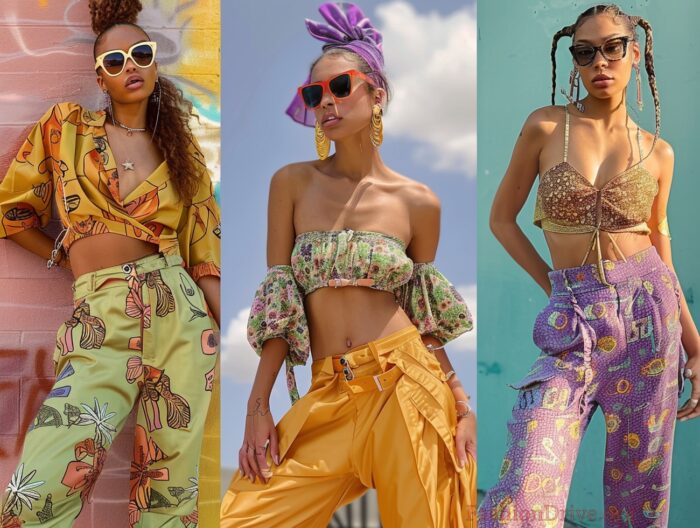
Technological Advancements in Fabrics
The 2000s brought significant innovations in textile technology, revolutionizing the way we think about and wear clothes. I witnessed the rise of smart textiles and performance fabrics that changed the fashion landscape.
Moisture-wicking materials became a game-changer in activewear:
- Polyester blends that draw sweat away from the body
- Quick-drying fabrics for outdoor activities
- Breathable materials for everyday comfort
These advancements weren’t limited to sportswear. High-tech fabrics made their way into everyday fashion:
- Wrinkle-resistant shirts
- Stain-repellent pants
- Temperature-regulating jackets
The best clothing works with your body, not against it.
Eco-friendly innovations gained traction as sustainability concerns grew:
| Material | Environmental Benefit |
|---|---|
| Recycled polyester | Reduces plastic waste |
| Organic cotton | Minimizes pesticide use |
| Bamboo fabric | Renewable resource |
| Lyocell | Biodegradable |
Smart textiles emerged as an exciting frontier. Fabrics embedded with technology could:
- Change color based on temperature
- Monitor heart rate and other vital signs
- Charge electronic devices
These advancements blurred the lines between fashion and function. Clothes became more than just aesthetic choices – they were tools to enhance our daily lives.
The Ugg Boots Phenomenon
Few items epitomized 2000s fashion quite like Ugg boots. These sheepskin boots from Australia sparked a global phenomenon, igniting debates about comfort versus style.
I observed Ugg boots’ meteoric rise from surfer staple to mainstream must-have. Their popularity stemmed from several factors:
- Unparalleled comfort
- Versatility (paired with everything from jeans to dresses)
- Celebrity endorsements
- The allure of casual luxury
The classic Ugg boot came in various heights:
- Ankle
- Mid-calf
- Knee-high
Colors expanded beyond the original chestnut:
- Black
- Grey
- Pink
- Blue
- Even metallic finishes
True style prioritizes how you feel, not just how you look.
Uggs’ popularity sparked numerous debates in the fashion world:
| Pro | Con |
|---|---|
| Supreme comfort | Perceived lack of style |
| Warmth in cold weather | Not water-resistant |
| Casual versatility | Concerns about foot health |
The boots’ global popularity led to countless knockoffs and inspired similar styles from other brands. This accessibility further fueled the trend.
By the end of the decade, Uggs had transitioned from a trendy item to a wardrobe staple for many. Their influence extended beyond boots as the brand expanded into slippers, sneakers, and other footwear styles.
The Ugg phenomenon represented a broader shift in fashion priorities, where comfort began to take precedence over traditional notions of style. This paved the way for the normcore and athleisure trends that would dominate the following decade.
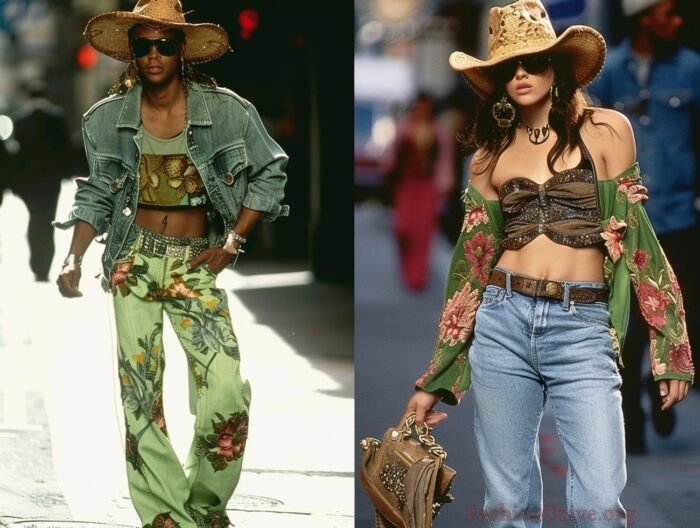
Accessory Trends
The 2000s saw a dramatic shift in accessory styles, with bold and oversized pieces taking center stage. I watched as accessories transformed from subtle accents to statement-making focal points of outfits.
Oversized sunglasses became an essential item:
- Bug-eye shapes dominated early in the decade
- Aviators made a strong comeback
- Colored lenses added a playful touch
Chunky jewelry ruled supreme:
- Large hoop earrings
- Layered necklaces
- Cuff bracelets
- Cocktail rings
Accessories are the exclamation point of an outfit.
The “it bag” phenomenon reached its peak during this era. Designers released must-have handbags each season, often with:
- Prominent logos
- Unique hardware
- Eye-catching shapes
Popular bag styles included:
| Style | Description |
|---|---|
| Hobo | Large, crescent-shaped shoulder bag |
| Clutch | Sleek, handheld evening bag |
| Tote | Roomy, open-top bag for everyday use |
| Baguette | Small, narrow shoulder bag |
Other notable accessory trends included:
- Wide belts worn over tops and dresses
- Ornate hair accessories like headbands and clips
- Colorful, patterned scarves
- Novelty phone cases as smartphones gained popularity
These bold accessories reflected the decade’s maximalist approach to fashion, allowing for personal expression and status signaling through even the smallest details of an outfit.
Sportswear as Everyday Wear
The 2000s marked the beginning of athleisure, blurring the lines between workout gear and everyday clothing. I observed a significant shift as sportswear brands expanded their influence beyond the gym.
Key factors driving this trend included:
- Increased focus on health and fitness
- Desire for comfort in daily wear
- Celebrity endorsements of athletic brands
- Innovations in fabric technology
Popular items that transitioned from sports to streetwear:
- Yoga pants and leggings
- Track jackets
- Performance sneakers
- Moisture-wicking tops
Style and comfort are not mutually exclusive.
Brand collaborations played a crucial role in elevating sportswear:
| Athletic Brand | Fashion Collaborator | Notable Product |
|---|---|---|
| Adidas | Yohji Yamamoto | Y-3 line |
| Puma | Jil Sander | Sneaker collection |
| Nike | fragment design | Limited edition shoes |
These partnerships brought high-fashion aesthetics to functional athletic wear, making it more appealing for everyday use.
The concept of functional fashion gained traction. Consumers sought clothing that could transition seamlessly from workout to social activities. This led to:
- Improved fabric technologies
- More stylish designs in athletic wear
- Sportswear-inspired pieces from traditional fashion brands
By the end of the decade, wearing gym clothes outside of fitness contexts had become socially acceptable and even fashionable. This trend set the stage for the full-blown athleisure movement that would define much of 2010s fashion.
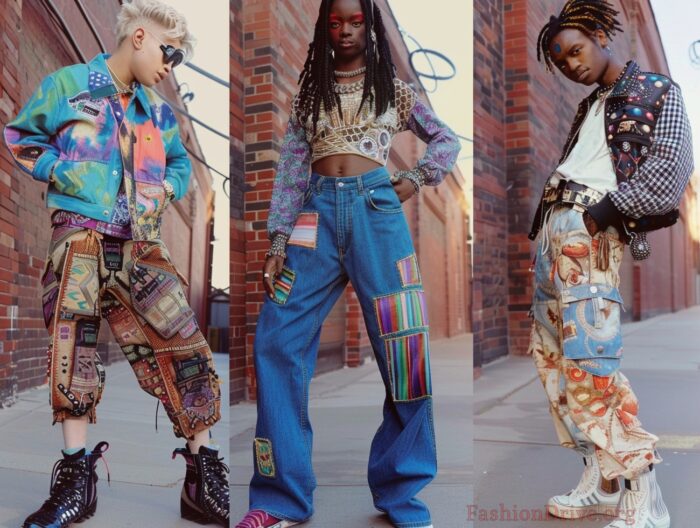
The Influence of Fast Fashion
The 2000s saw the meteoric rise of fast fashion, fundamentally changing how we consume clothing. I watched as brands like H&M and Zara revolutionized the industry with their quick turnaround of trendy, affordable pieces.
Key aspects of the fast fashion model included:
- Rapid production cycles
- Constant new arrivals in stores
- Affordable pricing
- Trend-driven designs
This approach democratized fashion in unprecedented ways:
- Runway-inspired looks became accessible to the masses
- Consumers could update their wardrobes frequently
- Style turnover accelerated dramatically
Fashion is no longer dictated from the top down; it’s a conversation between brands and consumers.
The fast fashion boom had far-reaching effects:
| Positive Impact | Negative Consequence |
|---|---|
| Increased style options | Environmental concerns |
| Affordability | Labor issues |
| Trend experimentation | Decreased clothing quality |
| Rapid trend adoption | Overconsumption |
Ethical concerns began to emerge as the decade progressed. Critics pointed out the environmental and human costs of producing cheap, disposable clothing.
Despite these issues, fast fashion’s influence on the industry was undeniable. Traditional retailers scrambled to keep up, while luxury brands grappled with the new pace of trend cycles.
By the end of the 2000s, fast fashion had reshaped consumer expectations about price, variety, and the speed of style changes.
Red Carpet Fashion Evolution
The 2000s transformed red carpet events into major fashion moments, with celebrity style becoming more influential than ever. I observed as award shows and movie premieres turned into global-style showcases.
Iconic red carpet moments of the decade included:
- Halle Berry’s sheer Elie Saab gown (2002 Oscars)
- Björk’s swan dress (2001 Oscars)
- Jennifer Lopez’s plunging Versace dress (2000 Grammys)
These appearances sparked trends, designer careers, and endless media coverage.
The role of the celebrity stylist grew tremendously:
- Stylists became power players in the fashion industry
- Their work extended beyond red carpets to everyday celebrity style
- Some launched their own fashion lines or collaborations
On the red carpet, fashion becomes performance art.
Award show fashion evolved throughout the decade:
| Early 2000s | Late 2000s |
|---|---|
| Bohemian looks | Sleek, bodycon dresses |
| Casual elements | High glamour |
| Experimental styling | Polished, curated looks |
The impact of red carpet fashion spread rapidly:
- Magazines featured “get the look” spreads
- Brands rushed to create affordable versions of celebrity gowns
- TV shows like “Fashion Police” dissected every outfit
Social media’s emergence towards the end of the decade amplified red carpet influence even further. Fans could now discuss and emulate celebrity style in real-time.
By 2009, red-carpet fashion had become a crucial part of a celebrity’s brand and a major driver of trends in everyday fashion.
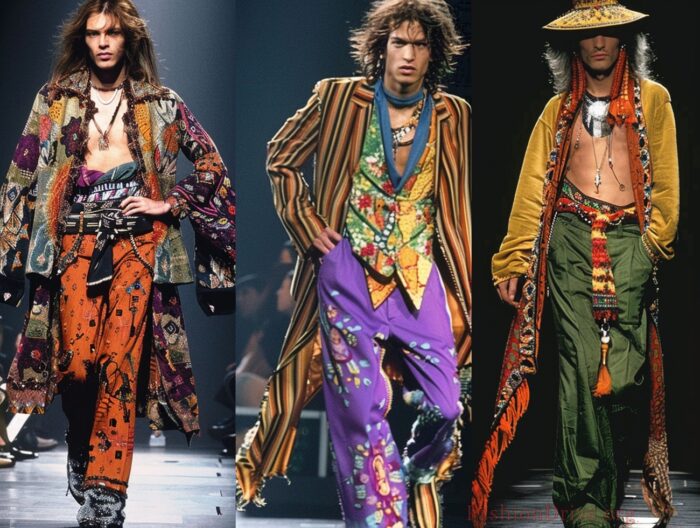
Globalization of Fashion
The 2000s marked a turning point in fashion’s global reach. I witnessed the industry transform as cultural fusion in design became more prevalent and international brands expanded rapidly.
Key aspects of fashion globalization included:
- Cross-cultural inspirations in high fashion
- Rise of global fast-fashion retailers
- Increased accessibility of international brands
- Emergence of new fashion capitals
Cultural fusion in design manifested in various ways:
- Western designers incorporating traditional Asian motifs
- African prints gaining popularity in European collections
- Middle Eastern influences on accessories and silhouettes
Fashion is a universal language, spoken with local accents.
The internet played a crucial role in disseminating trends globally:
| Platform | Impact on Fashion |
|---|---|
| Fashion blogs | Democratized fashion criticism |
| E-commerce | Made international shopping accessible |
| Social media | Allowed instant sharing of street-style |
International brand expansion reshaped the retail landscape:
- Zara expanded from Spain to over 70 countries
- H&M grew from a Swedish company to a global powerhouse
- Uniqlo brought Japanese minimalism to the world stage
This globalization led to both homogenization and diversification of style. While certain trends became universal, local fashion scenes also gained international attention, celebrating unique cultural aesthetics.
Conclusion: Y2K Fashion Legacy
As I reflect on the fashion landscape of the 2000s, it’s clear that this decade set the stage for many of the trends we see today. The era’s influence continues to resonate in contemporary style.
Key legacies of 2000s fashion include:
- The rise of fast fashion and its ongoing ethical debates
- Athleisure as a legitimate style category
- The fusion of high fashion and streetwear
- Celebrity influence on mainstream style
- Increased focus on individuality in fashion
Fashion doesn’t repeat itself; it evolves, carrying echoes of the past into the future.
The decade’s most enduring contributions:
| Trend | Lasting Impact |
|---|---|
| Technology in textiles | Continued innovations in smart fabrics |
| Globalization | More diverse influences in design |
| Digital fashion media | Social media as a primary fashion platform |
| Comfort-focused style | Prioritizing wearability in design |
While some 2000s trends might seem dated now, others have been revived or reinterpreted. Y2K aesthetics, for instance, have seen a resurgence among Gen Z consumers.
The 2000s taught us that fashion is cyclical but never static. It showed how quickly trends can spread in a connected world and how personal style can be a form of self-expression and identity.
As we move further into the 21st century, the fashion lessons of the 2000s continue to shape how we dress, shop, and think about style. The decade’s legacy reminds us of fashion’s power to reflect and influence culture on a global scale.
